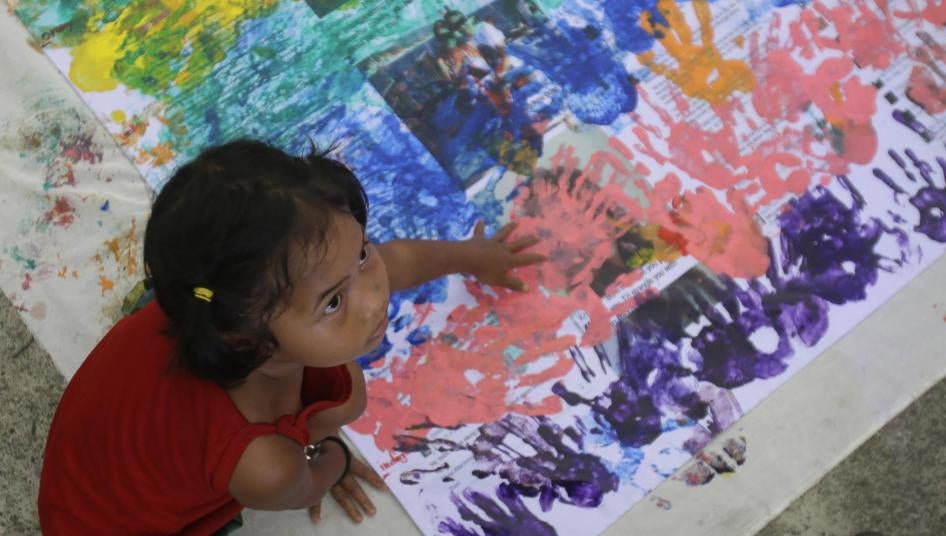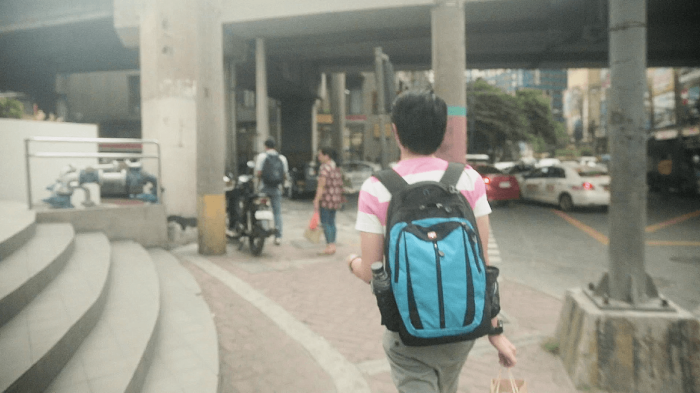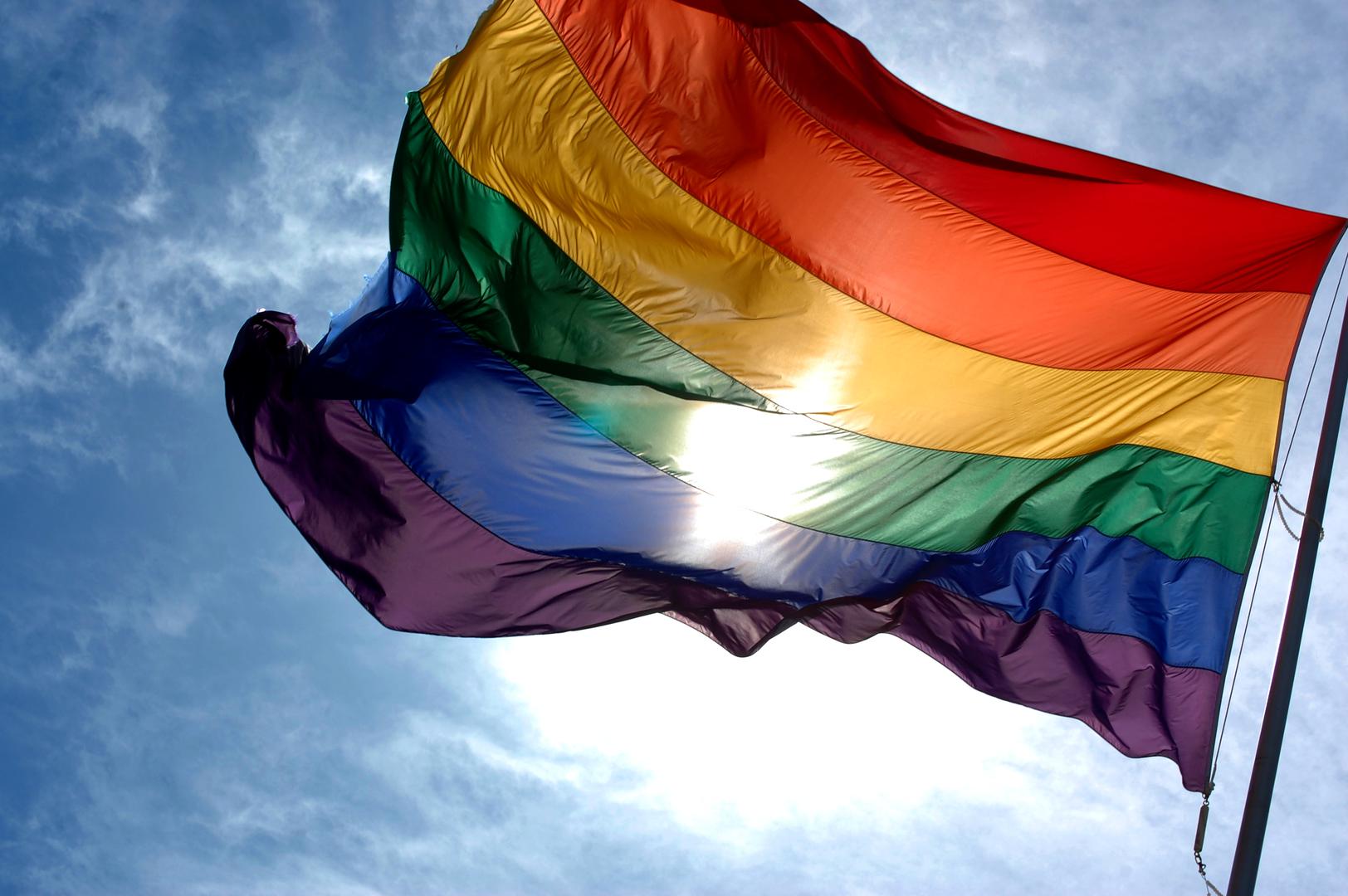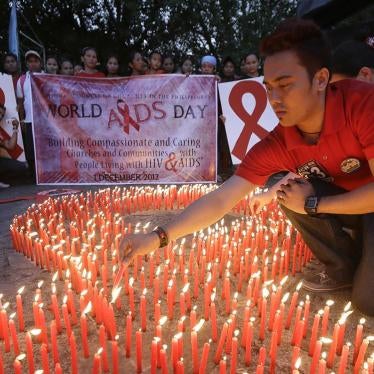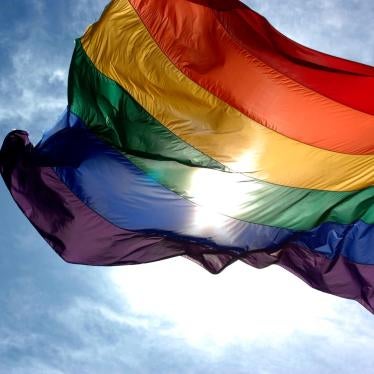(Manila, June 22, 2017) – Students across the Philippines experience bullying and discrimination in school because of their sexual orientation and gender identity, Human Rights Watch said in a report released today. While Philippine law provides protections against discrimination and exclusion in schools, lawmakers and school administrators need to take steps to ensure they are fully implemented.
The 68-page report, “‘Just Let Us Be’: Discrimination Against LGBT Students in the Philippines,” documents the range of abuses against lesbian, gay, bisexual, and transgender (LGBT) students in secondary school. It details widespread bullying and harassment, discriminatory policies and practices, and an absence of supportive resources that undermine the right to education under international law and put LGBT youth at risk.
“LGBT students in the Philippines are often the targets of ridicule and even violence,” said Ryan Thoreson, a fellow in the LGBT rights program at Human Rights Watch. “And in many instances, teachers and administrators are participating in this mistreatment instead of speaking out against discrimination and creating classrooms where everybody can learn.”
Human Rights Watch conducted in-depth interviews and discussions with 98 students and 46 parents, teachers, counselors, administrators, service providers, and experts on education in 10 cities in Luzon and the Visayas. LGBT students said that existing protections are irregularly or incompletely implemented, and that secondary school policies and practices often facilitate discrimination and fail to provide LGBT students with information and support.
Lawmakers in the Philippines have recognized that bullying in secondary schools is a problem and have taken important steps to address it, Human Rights Watch said. In 2013, the Philippine Congress passed an anti-bullying law and the Department of Education issued regulations prohibiting bullying on the basis of sexual orientation and gender identity. During the 2016 presidential campaign, too, Rodrigo Duterte vocally condemned bullying and discrimination against LGBT people.
“President Duterte has spoken out against bullying and discrimination against LGBT people in the past, and he should do so now,” Thoreson said.
Yet Human Rights Watch’s research shows that LGBT students still encounter physical bullying, verbal harassment, sexual assault, and cyberbullying in schools. Many students were not aware of anti-bullying policies or did not know where to seek help if they were persistently bullied.
“When I was in high school, they’d push me, punch me,” said Carlos M., a 19-year-old gay student from Olongapo City. “When I’d get out of school, they’d follow me [and] push me, call me ‘gay,’ ‘faggot,’ things like that.” (Names of students quoted in the report were changed for their protection.)
The hostility students face in school is often exacerbated by discriminatory policies and practices, Human Rights Watch said. Schools in the Philippines impose gendered uniform and hair-length requirements without exceptions for students who do not identify as their sex assigned at birth. These inflexible requirements cause many LGBT students to feel uncomfortable or unwelcome at school, be turned away by school guards, or skip class or drop out.
“The failure to pass an anti-discrimination bill puts LGBT kids at risk of discrimination and violence,” said Meggan Evangelista of LAGABLAB Network. “If lawmakers are serious about making schools safe for all students, they should stop delaying and pass anti-discrimination protections as soon as possible.”
Harassed students seeking help are hindered by the lack of information and resources pertaining to LGBT youth at the secondary school level. LGBT issues are rarely discussed in school curricula – and when they do arise, teachers often make negative or dismissive comments about LGBT students, including instructing their students that being LGBT is sinful or unnatural.
“They say that gays are the main focus of HIV,” said Jonas E., a 17-year-old gay boy in high school in Mandaue City. “I’m a bit ashamed of that, because I was once in section where I’m the only gay, and they kept pointing at me.” Virtually none of the students interviewed had received LGBT-inclusive sexuality education, leaving them ill-equipped to navigate relationships and keep themselves safe.
Very few students have access to teachers or counselors who are trained to provide support for LGBT students as they grow and develop. While LGBT student groups have been highly successful at providing peer education and support at the university level, few exist in secondary schools.
Authorities at every level of government should take steps to promote student safety, equality, and access to education in schools, Human Rights Watch said. Congress should pass anti-discrimination legislation that protects LGBT students in schools. The Department of Education should survey schools to ensure anti-bullying protections are being fully implemented, train teachers to be responsive to the needs of LGBT students, incorporate LGBT issues into curricular modules, and promulgate model policies prohibiting discrimination in schools. At the school level, administrators should strengthen anti-bullying and anti-discrimination policies to ensure LGBT youth are safe and respected.
“Prohibiting bullying against LGBT youth was an important first step,” Thoreson said. “Now lawmakers and school administrators should take concrete steps to make those protections meaningful and promote respect for LGBT youth throughout the Philippines’ school system.”
